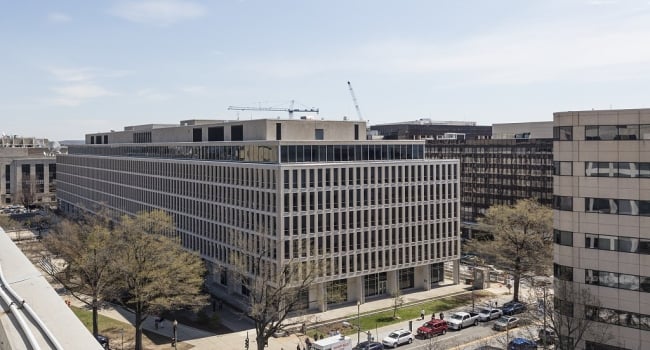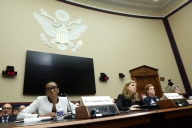You have /5 articles left.
Sign up for a free account or log in.

The Lyndon Baines Johnson Department of Education Building
Wikimedia
Eight states and one territory are asking the Department of Education to waive a requirement that stipulates they must continue funding higher education at or above current levels in order to keep the federal dollars they received during the pandemic.
Each state provided its own justification for the request, but some higher education leaders worry that states’ failure to maintain appropriations will hurt higher education funding levels in future years.
All three federal pandemic stimulus bills included a maintenance-of-effort requirement that states must meet if they want to keep the federal dollars. The CARES Act stipulated that states that received support from the Governor’s Emergency Education Relief Fund must maintain state support for higher education during fiscal years 2020 and 2021 that is at or above average levels of state support during fiscal years 2017, 2018 and 2019. The subsequent Coronavirus Response and Relief Supplemental Appropriations Act and American Rescue Plan say the same for fiscal year 2022.
Congress uses maintenance-of-effort requirements to ensure states continue to fund public programs, said Luis Maldonado, vice president for government relations and policy analysis at the American Association of State Colleges and Universities.
“The maintenance of effort is one of the mechanisms that federal policy makers use to make sure that states continue to make the necessary investments as a result of the federal government helping them through a particular situation or supporting a particular program,” Maldonado said.
The Department of Education has yet to approve or deny the waiver requests, but either decision could have an impact on higher education funding in those states. If the waivers are approved, those states may lower their own contributions to higher education funding while the budgets are supplemented by federal dollars. If the waivers are denied, states must maintain their higher education funding levels or return the federal aid.
Colorado, Idaho, Kansas, Michigan, Minnesota, North Dakota, New Jersey, Puerto Rico and Washington have asked the Department of Education to waive the maintenance-of-effort requirement. Florida and Oklahoma also filed such requests but have since withdrawn them.
Idaho submitted its request in December, said Mike Keckler, a spokesperson for the Idaho State Board of Education. The state requested a waiver because although higher education funding continues to increase, it takes up a smaller share of the state budget due to a recent Medicaid expansion, he said.
Washington and Kansas officials also argued in their waiver requests that while higher education funding has increased in the state, its proportion relative to the states’ general budgets is not as high as it needs to be to meet the maintenance-of-effort requirement.
“The state has significantly increased its support for higher education in [state fiscal year] 22 relative to the baseline years in every conceivable measure and calculation, with the sole exception of using proportion of the State General fund as the measuring stick,” Adam Proffitt, Kansas director of the budget, wrote in the states’ justification letter for its waiver request.
The Department of Education did not say when it would issue decisions on the waiver requests.
“We are reviewing the waiver requests closely to ensure states meet the requirements under the laws and to protect students’ interests,” a department spokesperson said.
Presidents of the American Association of Community Colleges, the Association of Public and Land-grant Universities and AASCU co-signed a letter to Education Secretary Miguel Cardona in April, urging the department to be judicious about which waiver requests it ultimately grants.
“We urge the Department to vigorously enforce the MOE requirements, and to grant waivers only in extraordinary circumstances,” the presidents wrote. “These emergency grants are for one-time, pandemic-related needs—to financially stabilize colleges and universities reeling from revenues losses, enhance campus health and safety, and help students who have been negatively impacted by COVID in a myriad of ways. They in no way are a substitute for ongoing state support.”
Maldonado explained that the three higher education organizations wanted to pre-empt potential state cuts.
“We wrote the letter because we were trying to protect the interest of public higher education from historical trends where states cut higher education funding before they cut other state-funded programs or services, because they think that higher ed can raise its own funds by increasing tuition,” Maldonado said. “Our letter is intended to try to get ahead of that curve.”
The association presidents also pointed out that state and local governments received billions in support very recently.
“Congress provided $350 billion to state and local governments in the American Rescue Plan Act,” the presidents wrote. “Given this, and that many states are in far better fiscal condition than was anticipated a year ago, states should not be reducing support for any public institution or higher education institution support overall. Indeed, [the American Rescue Plan] explicitly prohibits state tax cuts, to further ensure that federal funds are additive to state expenditures.”








